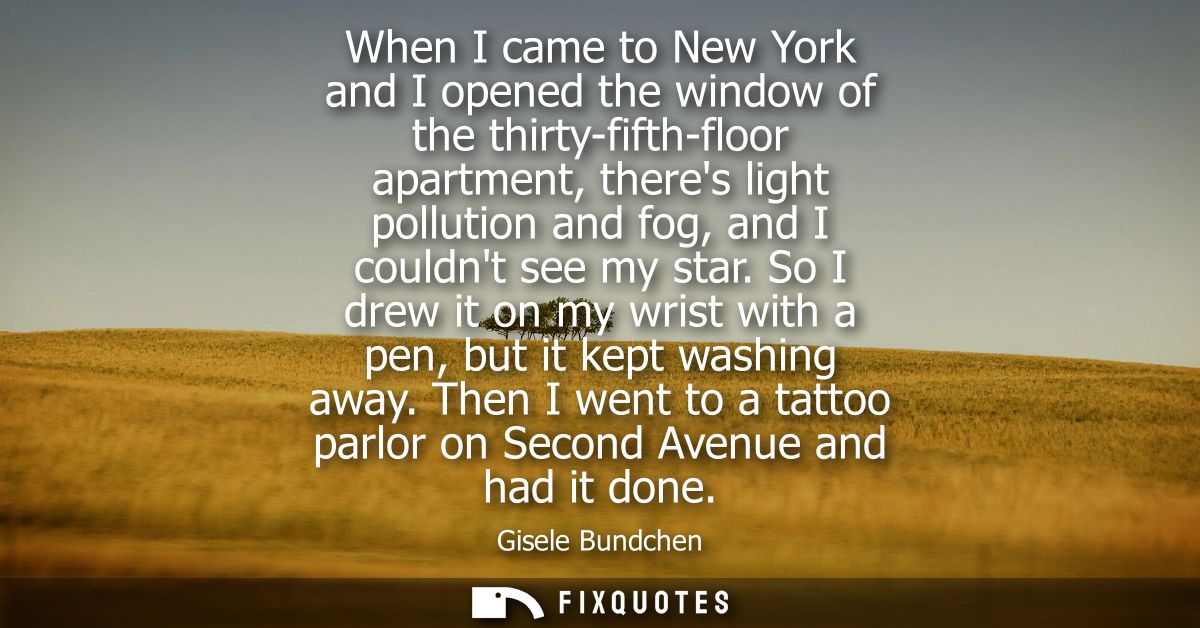"When I came to New York and I opened the window of the thirty-fifth-floor apartment, there's light pollution and fog, and I couldn't see my star. So I drew it on my wrist with a pen, but it kept washing away. Then I went to a tattoo parlor on Second Avenue and had it done"
About this Quote
Gisele Bundchen’s reflection on her experience after moving to New York is a meditation on loss, adaptation, and the enduring search for personal meaning in a new environment. Arriving in a city renowned for its vibrancy and possibilities, she unexpectedly confronts absence: the comforting presence of her “star” in the night sky, which once may have grounded her or provided a sense of connection to home, is now obscured by the artificial glare and fog of urban life. The inability to see her star underlines a sense of dislocation, highlighting how city life can sometimes create distance between individuals and the natural world, or between their new and former selves.
In response to this disconnection, Bundchen improvises a solution and draws the star on her wrist with a pen. This act is both pragmatic and poignant, a symbolic attempt to hold onto a cherished piece of her past and to make permanent what is ephemeral. Yet, the recurrent washing away of the pen’s ink serves as a gentle reminder of impermanence and the difficulty of preserving moments, memories, or feelings in their original form. Each time the ink fades, there is a miniature loss, compelling her to renew her mark again and again.
Ultimately, Bundchen chooses to render the star indelible, having it tattooed onto her skin. This gesture embodies resilience and transformation: instead of surrendering to the city’s overwhelming forces or forgetting what mattered to her, she integrates her history into her very being. The tattoo becomes both a personal emblem and a statement of intent, asserting that she carries her roots and hopes not just in memory, but as a visible, lasting part of herself. Through this act, she reconciles her identity with her new circumstances, demonstrating how people adapt, hold onto meaning, and create continuity amidst change.
About the Author

